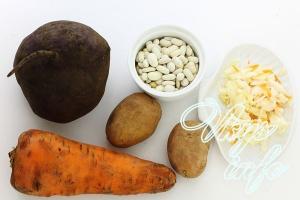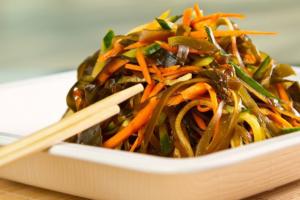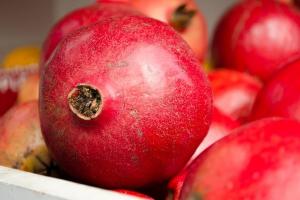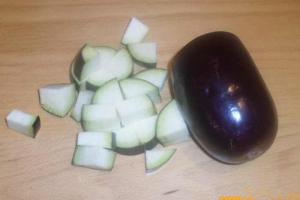Mulberry, popularly called the “mulberry tree,” has been known since time immemorial. Belonging to the mulberry family, this plant in nature is represented by shrubs and tall trees. Mulberries are not actually mulberries: they are infructescences of mini-nuts with tightly fused pericarps.
The most popular among domestic consumers are black and white mulberries, but in America a completely inedible mulberry grows, highly valued for its wood. There is also a forage species that grows in the wild.
This delicious mulberry!
The leaves of the plant are the main food for the silkworm, whose cocoons are main material to obtain silk. By the way, black and white mulberries differ from each other not in the color of the berries, but in the color of the bark of the branches: in white mulberries it is light, in black mulberries it is an order of magnitude darker. The fruits of this plant, loved by adults and children, contain a large complex of vitamins, which makes consuming this product not only pleasant, but also healthy. Black mulberry is the basis for delicious jams, jams and compotes, fermentation of berries yields excellent wine, and distillation produces mulberry vodka. Of course, fresh mulberry fruits are most in demand.
Black mulberry: description
Black mulberry, whose homeland is Iran, is very loved by many people for the sweet, slightly sour taste of its purple-black, blackberry-like berries. Its leaves are not suitable for feeding silkworms, because they are too tough for such capricious caterpillars.

Mulberry, planting and caring for which does not require special knowledge, is a heat-loving plant; can reach a height of 3.5 meters; In garden conditions, for ease of picking berries, it is recommended to form the crown in a timely manner so that the height of the plant does not exceed 2-3 meters. The lifespan of mulberry is quite long - several hundred years; The harvest can be expected 5 years from the moment of planting, from grafted trees - a little earlier. On average, a 10-year-old tree can produce about 100 kilograms of high-quality sweet fruits.
Plants can be either self-pollinating (have flowers of both sexes in one inflorescence) or not. In the second case, a pair (male and female trees) will need to be planted on the site.
Mulberry as an element of landscape design
Black mulberry is often used in landscape design; The tree looks impressive in group plantings and is used to form hedges. Its decorative forms are becoming increasingly popular, for example, weeping, characterized by original branches bending towards the ground. Low mulberries with a spherical crown are also quite popular when decorating plots.
Reproduction
Black mulberry can be propagated in several ways: by seeds and vegetatively.

The seed method is most often used by breeders to adapt the plant to northern regions or when growing a rootstock for grafting. The seeds, which are very small (1000 pieces weigh about 2.5 grams), must first undergo stratification for 2 months. Sowing is done in early spring, embedment in the soil is shallow. Crops need to be mulched to protect the top soil layer from drying out. During the season, young seedlings should be weeded several times, destroying the weeds located around them. By autumn good care Large seedlings will appear, fruiting of which will begin at 5-6 years of age.
Vegetative propagation of mulberries is carried out by layering, grafting, green cuttings and shoots. Cultivated varieties are often propagated by grafting; white mulberry is used as a rootstock.

It is recommended to grow mulberries on loose loamy or sandy loam soils. For bush planting, it is recommended to maintain a distance between plants of at least half a meter with a 3-meter row spacing. The interval between mulberry trees is at least 5 meters with a 4-meter row spacing.
Features of care
The main factors in mulberry care are watering and pruning. It is recommended to water the tree very abundantly in the first half of summer for the purpose of the upcoming winter. The plant will also need to be well fed with organic and mineral fertilizers. Feeding and watering should be stopped in July, then the mulberry will be easier to tolerate temperature changes and frosts.
The ripening of berries occurs from May to August; it lasts very unevenly: one branch can be densely strewn with ripe fruits, while some of the berries are just beginning to grow. Ripe berries fall off easily. Therefore, at the beginning of fruit ripening, it is recommended to lay film or fabric under the tree to facilitate harvesting.
Mulberry in folk medicine
Traditional medicine has appreciated medicinal properties mulberries. A decoction of tree bark is an effective anthelmintic. The juice of the fruit helps cleanse the blood, helps with stomatitis, sore throat and other inflammations of the mucous membranes, an infusion of the berries will cure a cough, a decoction of the branches of the plant helps with rheumatic pain, a decoction of the leaves is used as an antipyretic. Even the roots of the mulberry tree are useful, a decoction of which provides an expectorant effect when sputum appears.
Black mulberry: varieties
Shelly No. 150 is a high-yielding variety. The creator of this variety is the Poltava breeder L. I. Prokazin. Shelly berries are very large, about 6 cm in length, characterized by high taste qualities. The length of the leaf with petiole reaches half a meter. This is one of the most the best varieties mulberries, which is appreciated by domestic consumers.

Black Baroness. The variety is tall, high-yielding, and frost-resistant. The ripening of large and sweet fruits occurs in June-July.
Black Pearl. Characterized by very large berries with a pleasant sweet taste, about 4 centimeters in length. The height of the tree is about 3.5 meters. Fruiting begins in June and lasts 1.5-2 months. The berries are large and characterized by a pleasant sweet taste.
The mulberry, also known as the mulberry, is a deciduous tree that is fruit-bearing, succulent, and has fleshy berries. The tree got its name because silkworms love its leaves, which, by the way, are their main food. Well, the wood of this tree is used in production musical instruments and wine barrels.
However, the most popular product of the tree are these same berries. They have a lot of useful properties and can help cope with many ailments, ranging from mild colds to heart defects. How to take advantage of them all beneficial properties plants, read below.
Chemical composition
Mulberries are 85 percent water. They contain ash, fats, carbohydrates, and dietary fiber. The caloric value of the plant's berries is 50 calories per 100 grams.
These berries are unusually rich in all kinds of beneficial substances. Thus, the fruit contains vitamin A, B vitamins, vitamin C, vitamin E, vitamin K and the incredibly rare vitamin PP. As for useful minerals and trace elements, then in the berry you can find potassium, calcium, iron, sodium, phosphorus, manganese, selenium, zinc and other substances.
Berries different types mulberries differ somewhat in composition. So, black mulberry contains more iron and organic acids, while white mulberry contains more carbohydrates.
Medicinal properties of mulberry
Due to its composition, mulberry has a number of beneficial properties. Yes, due to high content iron and B vitamins, it stimulates hemoglobin production and general hematopoietic function of the body. The berry also helps strengthening the heart and blood vessels, and it is often used in the treatment of atherosclerosis, arrhythmia, tachycardia and heart defects.
Do not forget about the choleretic, diuretic and mild laxative effects of the fruit. Moreover, if you use unripe berries, due to the abundance of tannins contained in them, you can achieve the opposite effect, which will undoubtedly be useful for diarrhea. In addition, mulberries stimulate the activity of the pancreas and stimulate digestion. Mulberries can also be used for bronchitis, acute respiratory infections and asthma. Fruits are also beneficial For brain activity and help with nervous tension, depression and insomnia.
In addition to berries, the bark of roots and leaves of the tree are used. The leaves of the tree are often used to combat diabetes, as well as prostatitis. In turn, the bark can lower blood pressure and speed up the recovery of damaged tissue.
Use in folk medicine
Considering the unique composition of mulberry and all its beneficial properties, traditional medicine simply could not ignore mulberry berries. Juices, syrups, decoctions, infusions, tinctures and even healing ointments are prepared from the plant. Moreover, not only berries are used, but also bark and even tree leaves. Below are several recipes from each part of the tree.
Fruit juice and syrup

Mulberry syrup or mulberry doshab is a national Caucasian dish. Tasty and incredibly healthy, this dish is an excellent immunomodulatory agent that helps with bronchitis and other inflammatory diseases of the respiratory tract. In addition, this syrup stimulates the production of blood and red cells, and also helps with stress and nervous tension.
Preparation of syrup:
- We sort and wash the mulberries under running water;
- Pour the fruits into a saucepan and mash them so that they release juice and do not burn;
- Place the pan on low heat and cook the berries for half an hour;
- After thirty minutes, remove the pan from the heat and strain the juice through cheesecloth or a sieve;
- If you wanted to extract mulberry juice, you can stop at this step;
- In order to obtain the syrup, cook it over low heat until it has reduced to one third of its volume.
The classic version of this recipe does not involve the use of sugar, since the berries are quite sweet on their own. However, if you want to speed up the process, you can add a little sugar. With sugar, the resulting syrup does not have to be boiled for a long time. The main thing is not to overdo it with the amount of sugar, otherwise the syrup will turn out very cloying. You should never add more than half a kilogram of sugar per kilogram of mulberries.
Leaf decoction

A decoction of mulberry leaves is an effective expectorant and diuretic. In addition, it can be used to disinfect wounds and cuts, as well as to relieve swelling. You can prepare the decoction according to the following recipe:
- We collect, wash and thoroughly chop the mulberry leaves;
- Dry the leaves, then take a dessert spoon of the raw material and fill it with half a liter of water;
- Bring the water to a boil, then let the broth brew for half an hour;
- Strain the broth and consume it in the amount of fifty grams before meals;
- For disinfection and scarring of wounds, we use the decoction externally.
Bark decoction
Mulberry bark decoction is a traditional Chinese recipe. This medicine is used to treat diabetes, renal failure and hypertension. In addition, it is useful for potency and increases sexual desire. The decoction is prepared as follows:
- Take three grams of dry and crushed mulberry roots;
- Pour a glass of boiling water over them and boil for twenty minutes over low heat;
- Next, you should let the broth brew for an hour and add the evaporated water;
- We take the decoction one-third of a glass three times a day.
Fruit infusion
The mulberry infusion is delicious and incredible useful tool. It is often used to treat acute respiratory diseases and makes an excellent laxative. In addition, the infusion of the fruit is valued for its mild sedative effect. Recipe:
- Take four hundred grams of berries, wash them thoroughly and sort them
- Grind the fruits into a paste
- Add two cups of crushed mulberry leaves to the pulp and mix thoroughly
- Pour the mixture into a glass of boiling water
- Let the mixture sit for five hours.
- We take two to three spoons before meals.
Leaf infusion
An infusion of mulberry leaves has powerful expectorant and mucolytic properties and is indispensable in the treatment of acute respiratory diseases such as sore throat, bronchitis and even asthma. The remedy from the leaves also has antipyretic properties and a mild calming effect. To prepare the infusion, follow the following recipe:
- Take a bunch of mulberry leaves, wash, chop and dry them;
- Pour two tablespoons of dried and crushed raw materials into a liter of boiling water;
- Cover the drink with a lid and let it brew for an hour;
- We drink one glass of infusion, three times a day, half an hour before meals.
In addition, an infusion of leaves can be used as drops for conjunctivitis and as a rejuvenating compress for the skin around the eyes. You can also use this product to rinse your hair after washing or as a facial tonic.
Infusion of bark
Medicine from mulberry bark has a lot of beneficial properties and is incredibly effective remedy to thin the blood. In addition, the infusion helps with bronchitis, bronchial asthma and acute respiratory diseases. Below is a recipe for such an infusion:
- Take 50 grams of dried bark;
- Fill it with a liter cold water and insist for an hour;
- After an hour, put the product on low heat and heat for fifteen minutes, without bringing to a boil;
- Let the infusion cool, then strain;
- We take one glass, three times a day, for five days. We repeat the course three times, with a break of three days.

Mulberry tincture is truly universal remedy and can cure many ailments. Thus, it normalizes metabolism, helps with intestinal diseases, and also cleanses the liver and kidneys of sand and toxins. In addition, tincture of mulberry fruit will help normalize sugar levels in diabetes, strengthen the cardiovascular system and even help improve vision. It helps a lot with sore throats and can even remove worms. You can prepare this truly miraculous remedy by following the recipe:
- We take four hundred grams of berries, wash them thoroughly and sort them;
- Grind the fruits into a paste;
- Take a glass of water and add two hundred grams of sugar into it;
- Boil the sweet water until all the sugar has dissolved;
- Cool the resulting syrup and mix it with crushed berries;
- Add half a liter of vodka to the mixture and mix thoroughly;
- Pour into a suitable glass container and seal it tightly;
- Place the bottle with the future tincture in a dark, cool place. Once every few days you should shake the contents of the bottle so that the beneficial substances are more evenly distributed in the mixture;
- In a month the tincture will be ready for use.
The resulting tincture has a spicy aroma and taste and is not very strong, about 30 degrees. This drink can be stored for three years.
Ointment
Mulberry ointment is an excellent remedy for treating all kinds of diseases and skin damage. It is able to cope with not too severe burns and suppuration, and also significantly increases the speed of regeneration from cuts. As for skin diseases, a similar ointment is often used for dermatitis and eczema.
You can prepare mulberry ointment according to the following recipe:
- Take dried mulberry roots and grind them in a coffee grinder;
- Pour two tablespoons of the resulting raw material vegetable oil in the amount of 100 milliliters;
- Mix the mixture thoroughly until it becomes homogeneous;
- Let the mixture sit in the refrigerator overnight;
- We treat the affected areas of the skin 4-5 times a day.
Use during pregnancy

Mulberries are an excellent source useful substances for pregnant women. Moreover, due to its composition, mulberry has a very beneficial effect on the growth and development of the fetus. However, despite all their beneficial properties, you should not overuse berries. This is primarily due to the diuretic properties of the plant. And increased urination, as is known, puts a strain on the kidneys, which is extremely undesirable during pregnancy. The daily norm of this berry is about 300 grams.
It is also important to note that the fruits must be well processed before consumption to avoid infection. It is best to pour boiling water over them before eating. Also, it is advisable to consume only fresh berries raw. If they sit in the refrigerator for at least one day, they will lose most its beneficial properties. It would be best to cook compote from them, or use one of the recipes indicated in this article.
Pregnant women should never eat unripe fruits. This can lead to upset, bloating, constipation and even poisoning.
Contraindications
Fortunately, mulberry and preparations based on it have almost no contraindications. Only people with individual intolerance to the components of the berry and a tendency to allergies should beware of it. The berry is a fairly powerful allergen. However, this does not mean that you can just sit down and eat a bucket of berries. The sweet and juicy berries are a natural laxative and can lead to serious stomach upset. Especially if you take them on an empty stomach or drink them cold water.
Diabetics and hypertensive patients need to monitor the amount of berries consumed. When you overeat mulberries, your blood sugar rises very sharply and your blood pressure increases. A preliminary consultation with a doctor is encouraged before consuming the berry and preparations based on it.
Mulberry has been cultivated for a long time. More than 150 of its species are known, and many fruit, fodder and ornamental varieties have been bred.
Mulberry varieties
Of the one and a half hundred species, barely a tenth of their total number has become widespread. We grow white, black and red mulberries. Satin (fodder) mulberry is found in nature. In America, there is a widespread variety that is of interest due to the high quality of its wood (the berries of the plant are inedible).
White mulberry varieties
White mulberry can have not only white, but also pink, yellow and even black fruits. The fact is that this variety got its name due to the light (grayish) color of the bark. Black mulberry has dark bark. Despite its southern origin, white mulberry successfully adapts to the conditions of the northern regions.
In China, this particular variety of mulberry was grown to breed silkworms (black mulberries have tougher leaves). Popular varieties:
- Diana
- Mashenka
- Snow White
- White tenderness
- White honey
- Dark-skinned girl
- Luganochka
- Black Baroness
Mulberry Black Baroness: variety description

One of the most popular varieties of white mulberry is Black Baroness. As the name suggests, the berries of this variety are black in color. The fruits are large (3.5 cm by 1.5 cm). The aroma of the berries is weak, the taste is sweet. The yield of the variety is high and stable. The ripening season is June-July. Plants can withstand winter temperature drops down to -30 °C.
Description of the White Honey mulberry variety

Another popular variety of white mulberry is White Honey. The plant is winter-hardy, self-pollinating, high-yielding. The juicy berries have a very sweet taste. Their ripening season is June-July.
Varieties of black mulberry
Iran is considered the birthplace of black mulberry. The berries of this variety have a sweet and sour taste (white fruits have fewer flavor nuances). The bark color of black mulberry is red-brown. Black mulberry is more capricious in terms of reducing temperature - the plants freeze slightly when there is a serious “minus”. Popular varieties:
- Royal
- Plodovaya-4
- Staromoskovskaya
- Black Pearl
- Black Prince
- Shelly-150
- Hope
Mulberry Nadezhda: variety description

The tree of this variety reaches a height of 10 m. The fruits are very dark and large (5 cm in length). Ripening season is July. The berries stick well to the branches. The fruits have a sweet and sour taste. The yield of the variety is high and stable. Plants tolerate frost well.
Large varieties of mulberry
Small-fruited mulberry varieties often delight with the sweet taste of the berries, but they have a serious disadvantage - harvesting is quite difficult. Large-fruited varieties attract gardeners due to the size and taste of the berries, and therefore are a priority. The most popular large-fruited varieties:
- Black Prince
- Shelly-150
- Black Pearl
- White tenderness
Description of mulberry variety Shelly-150

This variety has gained recognition due to its large and sweet berries (5.5 cm in length, weight 4-6 g). The fruiting season begins at the end of May. Fruits are colored dark color. The variety is productive. Transportability of fruits is average.
Decorative mulberry varieties
Popular decorative varieties mulberries such as Lasiniata distinctive feature are beautiful carved leaves), Aurea (with yellow leaves), Globosa (the tree of this variety has a beautiful spherical crown), Pyramidalis (the variety is characterized by a pyramidal crown shape).
Mulberry varieties for Russia
What varieties of mulberry are suitable for the Moscow region and middle zone Russia? Many varieties can withstand frosts down to -30 ° C, but it is worth considering that the roots of the plant freeze slightly at -7 ° C... -10 ° C. When planting mulberries in this region, the root collar of the seedling is buried, and the roots are mulched for the winter. Short daylight hours also interfere with the normal development of mulberries. In the Moscow region, it is recommended to grow the plant in the form of a bush, and not a tree, as in the southern regions. In the middle zone, white mulberry varieties have taken root; black ones tolerate low temperatures less well. Popular frost-resistant varieties mulberries:
- Vladimirskaya
- Staromoskovskaya
- Royal
- White honey
Description of the mulberry variety Staromoskovskaya
White mulberry Staromoskovskaya has a spherical crown. The plant can be grown in a weeping form. The berries are sweet, almost black, 2-3 cm in length. The plant is frost-resistant. Looking for self-fertile variety mulberry, choose the Staromoskovskaya variety - the plant is capable of producing a harvest of berries without a pollinator variety.
Mulberry: the best varieties
It is difficult to say which mulberry variety deserves the title of best. If you prefer the rich taste of berries, opt for black mulberry varieties. If you love exquisite sweetness, plant white mulberry seedlings in your garden. If conditions are not favorable for plant pollination, order a self-fertile variety from the nursery. Choose large-fruited varieties and be sure to take into account the climatic conditions of your region.
©When copying site materials, keep an active link to the source.
Mulberry fruits, shaped like blackberries, are extremely useful and are used as a natural antiseptic.
Mulberry in medicine: benefits and contraindications of fruits
Mulberry- a genus of deciduous trees of the mulberry family. In culture for more than 3000 years. People breed them for their leaves, the main food of silkworms, and as a fruit crop. There are about 10 species in the genus, but three are most often used. The berries are a cluster of juicy grains with skin, pulp and small grains.
There are many types, shapes and varieties, among which black, white and red mulberries stand out for their fruits. All species are fast-growing deciduous dioecious plants, distinguished by a variety of leaf shapes, which, even on one branch, can be three-, five-fingered or whole heart-shaped.
All parts of the mulberry tree contain milky sap, which is released when the plant tissue is injured. The fruits resemble berries or, in some cases, contain seeds, in others they are seedless.
As you can see in the photo, mulberry berries have the shape of drupes and reach 2-3 cm:


The fruits are juicy, sweet, and have a pleasant aroma. The first fruits begin to ripen in mid-July. The main ripening period occurs at the end of July - beginning of August.
The first to use mulberry in medicine was the medieval Persian scientist, physician and philosopher Abu Ali ibn Sina - Avicenna, who was one of the first to draw attention to the benefits of using this plant.


All parts of the tree are used for treatment - roots, bark, leaves and fruits. This plant is an excellent natural antiseptic and can be used as an anti-inflammatory, expectorant, diuretic, diaphoretic, and astringent.
It is used in the production of sugar, citric acid and vinegar. IN folk medicine This unique plant can bring tangible benefits in the treatment of many diseases. The berries, when fully ripe, are an excellent laxative and are suitable for constipation. Green fruits are used for diarrhea. Juice diluted with boiled water is used to rinse the mouth for throat diseases. An infusion of mulberry bark and berries is effective for acute respiratory infections, bronchitis, and bronchial asthma.


As a diuretic, decoctions of the bark and roots are used for hypertension. The leaves are infused and taken in infusions for fever to reduce the temperature. It is recommended to consume berries in large quantities with heart disease and myocardial dystrophy. A healing powder is made from the bark; if it is mixed with oil, you get a remedy for healing wounds, cuts, and ulcers. This ointment quickly eliminates bruises.
Eating it helps in the treatment of prostatitis and impotence, with uterine bleeding and to alleviate menopausal syndrome.
The main contraindication for mulberries is individual intolerance. Excessive consumption of this berry can cause disorders of the digestive system. In addition, people suffering diabetes mellitus or hypertension, you should consult your doctor before eating berries.
Black and white mulberry: photo and description
There are about 24 species of mulberry, native to East and Southeast Asia, the Sunda Islands, India, southern North America, partly in Africa and southern Europe. There are 2 common types of mulberries in culture - white and black mulberries.
They are grown for their fruits and to produce leaves for feeding silkworms. To feed the silkworm, white, silkworm and multi-stemmed mulberries are cultivated, and black mulberries are also cultivated to produce fruits.


White mulberry can have not only white, but also pink, yellow and even black fruits - this variety got its name thanks to light color tree bark.
White mulberry is native to Asia Minor and East Asia. This is a fast-growing, tall, long-lived tree with a dense spherical or spreading crown. The leaves on one tree grow in various configurations; in summer they are dark green and yellow in autumn. The berries of this type of mulberry deserve a special description - they have a surprisingly sugary taste.
It is unpretentious to soil and growing conditions - it grows successfully in city conditions, and its long roots help stabilize slopes and ravines. At a young age, it easily tolerates transplantation. This species can withstand significant frosts (up to -30 degrees), and when young branches freeze after pruning, they quickly grow back and restore fruiting.
Grown by gardeners and how ornamental plant: there are many garden forms with a weeping, pyramidal, spherical, multi-stemmed, dwarf crown and a variety of leaves. Decorative forms propagated by grafting and vegetative methods.


Pay attention to the photo - white mulberry is used for single, group planting and for creating a dense hedge, as it tolerates regular trimming well.


Black mulberry originally from Iran and Afghanistan. In nature and in hot countries it is large tree up to 15 m high. The wide spreading crown is covered with large leaves. The shiny black fruits are very juicy and tasty, sweet and sour.
Summer green deciduous tree with a low, very wide and spreading crown. The tree is usually much larger in width than in height. The trunk is often twisted, curved or crooked. The bark is dark brown or orange-brown, fissured. The leaves are 7-18 cm long and about 8 cm wide, broadly oval and heart-shaped, with a short slender apex, deeply notched at the base, irregularly crenate, serrate-crenate or slightly lobed along the edges; on the upper side they are rough, pubescent, light green to bright green, on the lower side they are light green, with soft pubescence.
The plant is monoecious. Men's earrings are short and thick, pale green. Female inflorescences are even shorter. Fruits develop not from carpels, but from elements of the flower cover. Blooms in May-June.
Below are descriptions of black and white mulberry varieties.


Black Baroness. Deciduous dioecious tree with a moderately dense spherical crown. The flowers are dioecious, collected in spikes. The leaves are simple, 3-5 lobed or entire. The fruit is a large one-dimensional edible, juicy, sugary complex drupe of thick black color. The taste is very sweet and pleasant, almost without acid. The aroma is insignificant. Fruiting is abundant and regular, the berries ripen in June-July. Productivity is high. Transportability of berries is satisfactory. The shelf life of fresh berries without spoilage is 6-12 hours. The variety is unpretentious to soil and living conditions. Withstands frosts of -30°C and above.


Dark-skinned girl- a variety of white mulberry. A large deciduous tree with a dense spreading crown. Productivity is high. The fruits are almost black, up to 3.5 cm in length and 1.2 cm in diameter, juicy, sweet, ripen in June-July. Transportability is good. When describing this variety of mulberry, it is especially worth noting the frost resistance, drought resistance and unpretentiousness of the trees.


Black mulberry Istanbul. One of the largest-fruited mulberry varieties. The tree is tall, up to 7 m high. The crown is dense, spherical. It begins to bear fruit in the 4th year.
Look at the photo - this black mulberry has small flowers, collected in spike-shaped inflorescences:


Leaves are ovoid. Blooms at the end of April. Ripe fruits are almost black in color, large 3 cm in length. The ripening period is long from the second ten days of July to August - the third ten days.
Unpretentious to soil and living conditions. Withstands frosts down to -30°C
Planting and caring for mulberries in spring and autumn
The plant is easy to grow, its unpretentiousness allows it to be planted on any soil. The plant loves moderate watering and mulching of the soil. The tree tolerates pruning well, which results in the crown becoming denser and more spherical in shape. In winter, no shelter is required - it can withstand frost well. In summer it can easily withstand drought. Propagated by cuttings, seeds or separating suckers from mother plant.
There are two main planting methods: seedlings and seeds.
For planting and subsequent care of mulberries, use a sunny place; the soil should be loose to make furrows easier to make. These furrows need to be well watered; it is advisable to add fertilizer for fruit and berry crops to the water.
Sow seeds as rarely as possible - this will make it easier to plant the seedlings. It is necessary to sow the seeds at a depth of 3–5 cm; after sowing, water them thoroughly and mulch them so that the soil does not dry out. When planting in the fall, take care of insulation so that the seeds do not freeze.
After the seedlings sprout, they need to be watered and weeded periodically. Seedlings can be fed with fertilizers to better growth. At proper care Mulberry seedlings will be strong and large by autumn. They will need to be seated - the distance should be from 3 to 5 meters.


Seedlings should be planted in early spring in the sunniest place. After digging a hole, add compost or nutrient soil to it, pour in plenty of water with fertilizer diluted in it for better rooting of seedlings, and cover with soil. Water and mulch the soil around the seedling again.
Caring for mulberries in spring, summer and autumn consists of weeding and watering. Seedlings can also be planted in the fall, but this must be done a month and a half before frost. To prevent the tree from growing too large and looking well-groomed, its crown must be periodically trimmed and shaped.
Pruning mulberry trees (with video)
Mulberries should be pruned only during the period of complete dormancy from early to mid-winter. In older trees, however, intensive sap flow may already occur at this time; A red-hot poker is traditionally used to cauterize wounds.


Prune old trees only when necessary - remove infected and damaged branches in the summer. Juice is also released through wounds in the roots; do not cut them off when planting.
Later, pruning of a properly formed tree can be kept to an absolute minimum.
U young tree clear branches from the trunk to a height of 1.5 m so that the spreading branches of an adult plant do not fall to the ground.
Unwanted shoots on the developing trunk are shortened in the first year, and completely removed in the second year.
To form a structurally sound tree, try to keep the main shoot to a height of about 6 m, tie it up if necessary and remove competing leaders, otherwise allow the crown to develop naturally.
To make harvesting easier, low-growing compact trees can be formed.
Trim the apical shoot directly above the top 3-4 powerful side shoots, at a height of 1-1.5 meters. Form a skeleton of 8-10 branches, like a low-standard apple tree.
Then allow the crown to develop naturally, keeping pruning to a minimum. Unwanted shoots must be quickly plucked or trimmed.


Young trees are easy to form. Seedlings slowly form side shoots, therefore, pruning them to clean the trunk may only be required after 3-4 years, as with some ornamental standard trees.
Once the trunk is formed, allow the crown to develop naturally or, to form a more compact tree, prune the top and upper side branches, like a low-bole tree, this year and next.
Watch the mulberry pruning video to better understand how this procedure is performed:
Mulberry grafting rules
If for some reason the plant produces low-quality fruits, or you want to grow several varieties on one tree at once, then the grafting procedure will help you.


The first step is to ensure that the cuttings are prepared in advance. Annual shoots are cut from the top of the crown fruit tree on the well-lit side in early spring or late winter, when there are no longer severe frosts. Store them in a damp, cool place, wrapped in a damp cloth. It is very important that the cuttings are prepared correctly and are not frozen.
Most often, mulberry grafting is done in the spring, in early or mid-April. The period of spring grafting begins with the beginning of bud break on the tree and lasts until the end of flowering. At this time, the circulation of sap in the tree trunk reaches its peak, which means there is a high probability of fusion of the scion and rootstock.
Vaccination in the summer is also welcome; it can be repeated after an unsuccessful procedure in the spring. For summer grafting by budding, shoots of the current year are used, rather than prepared in advance. To do this, you should choose vegetative shoots: elongated, fruitful and with large leaves. It is also important that the buds on them are well developed.
It is very important to follow the rules for mulberry grafting:
- The work must be done with clean and well-sharpened tools to ensure high-quality cuts the first time.
- The cut areas quickly oxidize, so the work must be done quickly enough.
- After the procedure, the wounds must be treated with a special putty - garden varnish or oil paint.
Non-traditional fruit crops with beneficial properties are becoming increasingly popular in Russia. One such plant is the weeping black mulberry, also known as the mulberry. The culture is especially widespread in the Moscow region and other regions of central Russia.
Description of culture
Black mulberry is a deciduous tree, reaching a height of 15 m. The plant gains most of its growth in the first years of its life, and subsequently its strength gradually slows down. The crown of the tree is wide and spreading, the bark is brownish in color, and the stems are thin. The leaves are very large, growing up to 20 cm in length and up to 15 cm in width. They have a lobed shape. The front side of the leaf blade is rough to the touch, the lower part is softened and felt-like.
The crop blooms in April-May, and already in June fruits form on the tree. The inflorescences consist of small green-white flowers. The plant most often begins to bear fruit at 3-5 years of age. The harvest is plentiful, with glossy bright black berries about 3 cm in length. The taste of the fruit is sweet and sour, very juicy.
Black mulberry
Mulberry white and black: differences
White mulberries have a slight sour taste. They are not as sweet as black mulberries, but at the same time they are lower in calories. White fruits are recognized as a dietary product. The color is not only white, but also yellowish and pink.
There is also a difference in chemical composition fruits White fruits are rich in significant carbohydrate content, while black mulberries have more organic acids.
Important! Black mulberry fruits are sweeter. Outwardly, they resemble blackberries. The sourness in the taste is very weak.
Black mulberry: cultivation and care in the Middle Zone
To grow mulberries, for example, in the Moscow region, you need to take into account some nuances.
Landing
The best time for planting black mulberry is mid-spring, when sap flow has not yet begun. Widely practiced and autumn planting carried out before the rainy season begins. In the latter case, you can even get more high yield provided that the plant overwinters well.
The area for cultivating the crop in question should be well open to sun rays, but at the same time it requires protection from strong winds. Groundwater must lie at a depth of at least 1.5 m. Mulberry can be cultivated on various types soils, but the following soil types are not suitable for it:
- sandstones;
- marshy, dried soils;
- salty.
Note! Clay soil definitely needs drainage, which can be made from pebbles or brick fragments.
The planting hole is prepared 2 weeks before planting. Its dimensions must correspond to the dimensions of the root system of the seedling. The approximate length, width and depth of the hole are 50 cm. In soil with a low content of nutrients, the hole is made a little larger, taking into account the application of fertilizers. To do this, use 5 kg of rotted manure mixed with 100 g of superphosphate. The resulting nutrient mixture is evenly distributed over the surface of the bottom of the hole and covered with soil so that the roots do not come into contact with the fertilizer when planting.
The seedling is placed inside the planting hole and the roots are straightened so that they do not overlap each other and do not rest against the edges of the hole. If the plant is too thin, drive a wooden peg into the hole with the sharp end down and tie the seedling to it with a piece of twine. The hole is filled with soil, constantly compacting it so that there are no empty cavities filled with air. Upon completion of planting, immediately dig a shallow ditch around the seedling, into which 2-3 buckets of warm, settled water are poured. Try to preserve this groove for subsequent irrigations. Without wasting time, the tree trunk sector is mulched to preserve moisture. For this purpose, peat or sawdust is usually used, but if they are not available, ordinary but dry soil from the same area will do.
Planting a mulberry seedling
Watering and fertilizing
Irrigation is very important for a young mulberry tree. The seedling will not take root on dry soil. The main watering period occurs in early to mid-summer. In the spring it is carried out only during dry periods, and from August inclusive the plants are not watered at all.
In the first month after planting, the plantings are fed with nitroammophos, with 1 tbsp per plant. spoon of fertilizer dissolved in water. In summer, fertilizing is repeated according to the same scheme, but potassium salt and superphosphate are used. At the beginning of August, they stop feeding the plant so as not to provoke secondary growth of shoots, which will not have time to ripen and will most likely die in the winter.
Superphosphate
Trimming
The formation of the black mulberry crown is usually carried out during the dormant period - in early spring, when the movement of juice has not yet begun. Anti-aging pruning begins in the last ten days of April and ends in May, when the buds begin to bloom. Sanitary pruning is carried out in the fall, when the air temperature has not yet dropped below −10°C.
In spring, on a young plant, all shoots are removed from the trunk from a height of about 1.5 m. Thanks to this, the branches of an adult tree will not bend towards the surface of the ground. The remaining central conductor is preserved and its height is increased to 5-6 m. You can also form a tree no higher than one and a half meters, which will be easier to care for. On such a plant, 8-10 skeletal shoots are left.
Sanitary pruning involves the removal of dried, diseased, frost-killed, significant mechanical damage stems. You also need to get rid of shoots that grow upward and inward and thereby thicken the crown.
Note! Subsequently, when the plant is normally formed, you just need to maintain its existing shape, getting rid of unnecessary stems.
Winter care
Black mulberry is characterized high level drought and heat resistance, while the plant practically does not show resistance to the unfavorable factors of the winter period. In view of this, the tree must be well prepared for cold weather.
It is necessary to stop adding nutrients in advance. Fertilizing is carried out only if the plant shows bright pronounced signs fertilizer shortage. For the same purpose, further irrigation is abandoned in August, and in autumn period carry out sanitary pruning.
Important! In regions with very cold climates, they practice planting seedlings with the root collar buried in the soil. This also allows you to protect the plantings in winter.
The plant is provided with some protection from cold by the ability to form cork tissue in the space between young and mature stems. This makes it possible to get rid of tissues unsuitable for survival at strong negative temperatures, but in years with snowless winters the plants freeze out. To prevent this, before the start of winter, the tree trunk sector should be mulched and thoroughly covered with spruce branches and other suitable materials.
Reproduction
Like all fruit crops, black mulberry reproduces by seed and vegetative methods. In the first case, the seeds need to undergo stratification. The procedure can be carried out either naturally (when the seeds are sown before winter) or artificially. In this case, they are placed in the refrigerator for 2 months in winter. Seeds are removed weekly for several hours, and visual inspections are also carried out regularly and diseased or rotten specimens are removed. Immediately before sowing, the seeds are soaked for a couple of hours in a solution of a growth stimulator. Next, they are embedded in the soil to a not too great depth, and then mulched for their speedy germination. Seedling care is standard.
The above method is relatively simple. Its main disadvantages are as follows:
- stretchiness during artificial stratification;
- the impossibility of propagating varietal specimens using this method.
To increase the quantity cultivated plants Vegetative propagation is used for black mulberry. Its peculiarity is that the plant practically does not reproduce either by green or lignified cuttings - the main varieties vegetative propagation fruit crops. Therefore, propagation by root shoots is used on the crop in question. In this case, the seedling is separated from the mother plant and moved to permanent place cultivation, caring for it like an ordinary seedling. This method also does not always allow varietal characteristics to be passed on to offspring. In addition, there is a risk of growing specimens exclusively with male inflorescences (after all, mulberry belongs to the category of monoecious plants).
Mulberry seedling
To guarantee the production and propagation of normal varietal plants, it is necessary to carry out either budding or grafting under the bark with cuttings. Budding is carried out in the summer with the help of dormant buds, and in the spring with germinating ones. The grafting is done on a vegetating tree using cuttings with 2 buds under the tree bark. On the rootstock you need to make a cut at an angle of about 35°, with a straight cut above the bud on the cutting, and a beveled one below the bud.
When cultivating in northern regions with a harsh climate (in the Urals, Siberia, north-west Russia), it is recommended to first grow wild black mulberry. It is more resistant to negative temperatures than varietal hybrids. Over time, when the plant gets stronger, it can be used as a rootstock for grafting varietal plants.
Important! Unlike other fruit crops, the mulberry scion is placed with the cut side facing the bark, not the wood.
Popular varieties
The assortment of black mulberries includes several dozen specimens, but only a few of them have gained the most popularity in Russia:
- Black Baroness. A tall variety characterized by increased productivity and resistance to negative temperatures. The fruits are large and sweet, ripen in the first half of summer.
- Shelley No. 150. Highly productive variety of Ukrainian selection. It is distinguished by very large berries (reach 6 cm in length). Taste and commercial qualities and properties are at a high level.
- Black Pearl. The tree reaches a height of up to 3.5 m. The fruits are about 4 cm long, tasty and sweet. Fruiting begins in June and lasts for 1.5-2 months.
- Nadiya. Medium-sized variety with large fruits. The berries are very sweet, black and purple in color, large. The plant bears fruit in the second half of summer. Features of the variety include resistance to diseases and drought.
When selecting suitable variety and cultivation technologies, you can get a full-fledged high-quality harvest of black mulberry. This crop can be considered one of the most promising in Russia for the next few years, until breeders develop something else unusual.








